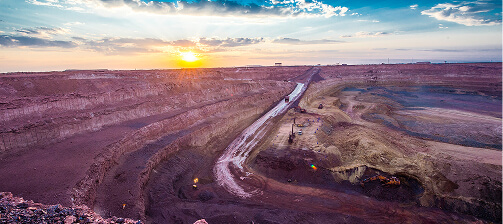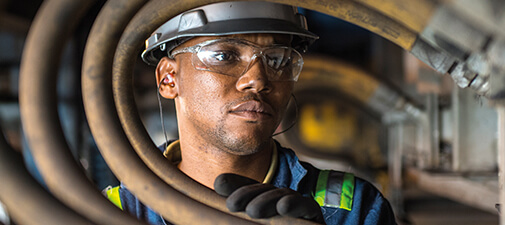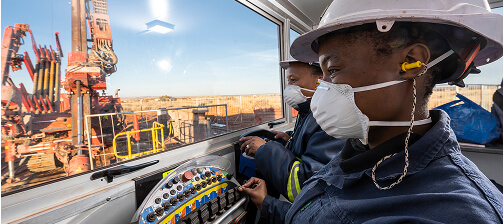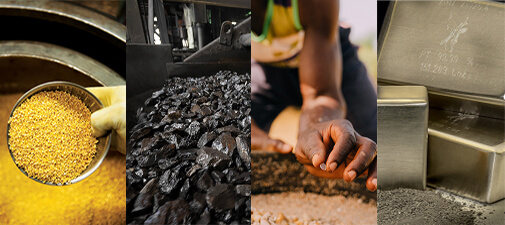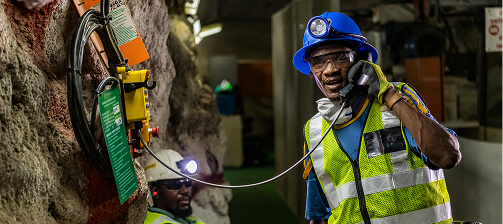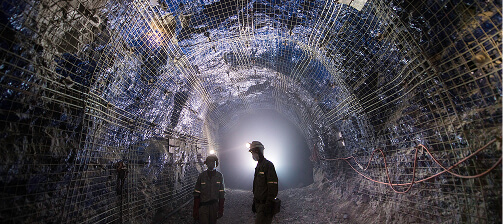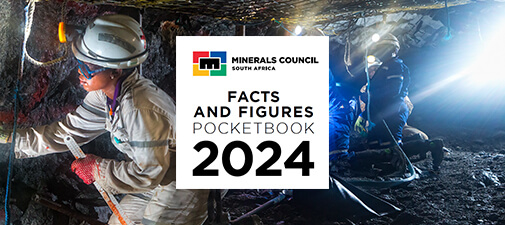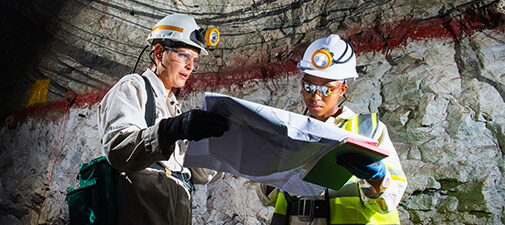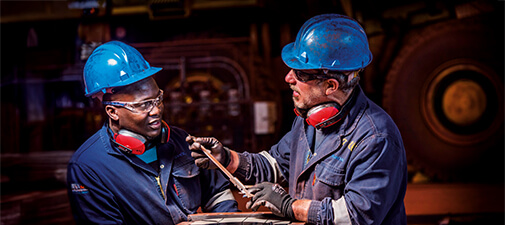COALBROOK, 21 JANUARY 1960
On Thursday, 21 January 1960, a roof caved in at the Clydesdale Coalbrook North Colliery, located near Sasolburg. A further cave-in took place a few hours later in the same locality from which mineworkers had been removed a short time before. The central portion of that section of the mine had completely collapsed and employees located at the eastern mine were trapped behind the resultant rubble.
The eastern portion of the mine was located a few kilometres away from the vertical shaft. The severity of the cave-in caused air pressure to build up in the shaft, damaging the main air-conditioning fan and cutting off the fresh air supply. Immediate efforts to reach the trapped employees were hampered by the presence of a high concentration of methane.
Rescue teams from surrounding mines were deployed to the scene. Over a period of 11 days, these rescue teams made use of the most advanced techniques and equipment at the time, desperately trying to reach survivors. Boreholes that were able to reach the area indicated a major collapse of mine workings, flooding and high levels of methane.
Tragically, the lives of 435 men were lost.
LEARNINGS
This tragedy at Coalbrook will never be forgotten, but the lessons learned have ensured that a similar event would not be repeated.
As a direct result of this tragedy, in 1963, the then Chamber of Mines (now the Minerals Council South Africa) established the Chamber of Mines Research Organisation (COMRO), alongside the Coal Mines Research Controlling Council (CMRCC). These entities became responsible for pioneering research in mining and safety systems, not only for the coal industry but also deep-level gold mining. By 1990, COMRO and its research projects were taken over by the Council for Scientific and Industrial Research (CSIR) and its designated research departments. Between 1963 and 1990, COMRO and the CSIR, alongside various other research organisations, reframed the workings of modern mines and became world-class industry leaders on the aspects of minerals, safety mechanisms and the operation thereof.
Many advancements were made in the fields of safety regulation and mining technology since then. Coalbrook continues to serve as a stark reminder of the importance of research and development. Possibly one of the most important consequences was the research undertaken to determine pillar strength scientifically, resulting in the development of the Salamon-Munro pillar formula, which remains relevant to this day.
In addition, the Mine Rescue Services obtained a custom-made colliery rescue drill that can be used to drill probe holes to extract people in the event of a mine collapse or other possible emergencies. The drill works at high speed and can probe closed underground workings to locate miners who might be trapped underground and extract them in specially designed capsules.
The former COMRO facility has now been re-opened as the Mandela Mining Precinct, a collaboration between government and industry, to modernise the South African mining industry into a leader of 21st Century methods that will encourage more technological integration as well as better safety initiatives and techniques to ensure the preservation of lives as well as our future economy.
![Logo MCSA [logo]](/templates/chamber/images/logo.svg)

